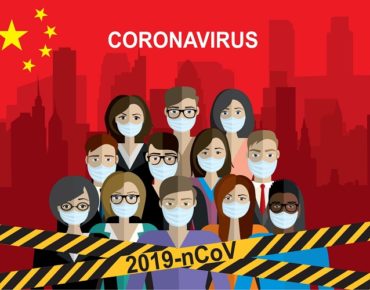Detecting Coronavirus: Toronto Start-up’s AI Beat CDC by a Week

As governments, companies, markets and travelers struggle to deal with the coronavirus outbreak, a Toronto start-up used AI to get a jump on the world in issuing warnings about the disease, which has infected 28,000, nearly 4,000 of whom are in critical condition, and killed 565, as of this writing.
BlueDot’s in-house developed AI warned the world of coronavirus in late December, a week ahead of the Center for Disease Control (CDC) and other health organizations.
“We are trying to push the frontiers for using data and analytics in technology to do things faster and better,” Khan told The Wall Street Journal of his company’s model, developed in 2018.
According to a 2016 article in the Toronto Star, 40-employee BlueDot founder Dr. Kamran Khan took a leaf from the book of hockey star Wayne Gretzky, whose mantra was “skate to where the puck is going, not where it’s been.” As is being seen in other fields in which AI is proving effective, the key to BlueDot’s coronavirus call is the creative mining and use of data to build predictive epidemiology models. BlueDot’s strategy, leveraging official and nonofficial information sources, recalls that of venture firm W.R. Hambrecht’s unconventional use of “dark data” for VC discovery and assessment.
 BlueDot’s model utilizes natural language processing and sentiment analysis combined with machine learning to detect signals of a potential epidemic.
BlueDot’s model utilizes natural language processing and sentiment analysis combined with machine learning to detect signals of a potential epidemic.
Among the company’s data sources are more than 100,000 daily news stories from around the world in more than 60 languages; reports issues by the CDC, the World Health Organization and other international organizations; satellite climate data; flight information and itinerary data from an airline industry trade organization; government-sourced data on human populations; information on animals that can spread infections; numbers of healthcare workers in given areas and global economic and political data, according to the Journal story. The data is ingested by a repository containing information on more than 150 pathogens.
“When the system spots a possible outbreak, the findings are reviewed by experts at BlueDot,” reported the Journal story. “In the case of the coronavirus, BlueDot’s system spotted a number of signals, including references to things like ‘undiagnosed pneumonia’ in Wuhan,” the city in China where the coronavirus first emerged.
Another organization that leveraged AI to identify the virus ahead of the CDC included HealthMap, which is affiliated with Boston Children’s Hospital. The epidemiology method used by the CDC, which issues official notices on U.S. outbreaks, requires the organization to verify of reports from health departments prior to issuing disease warnings, slowing the process.
“The trade-off between the official information coming from a government agency and this unofficial information is that the official information has gone through additional validation and verification,” BlueDot’s Dr. Khan told the Journal. “The unofficial information is more timely, but it hasn’t necessarily gone through the same process.”
But in the wake of SARS, the Zika virus and now the coronavirus, in which early notice and quick response are of the essence, that could be a trade-off worth taking.










